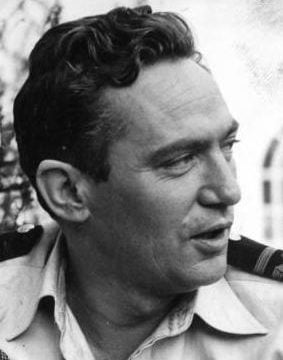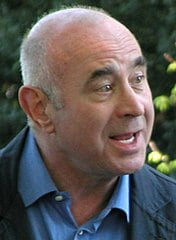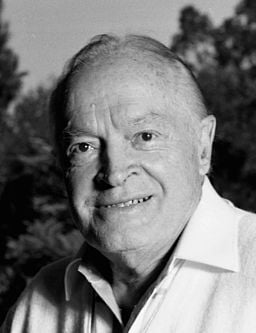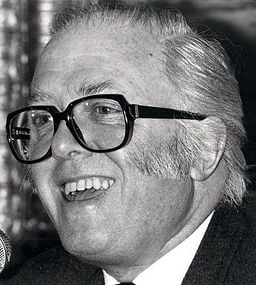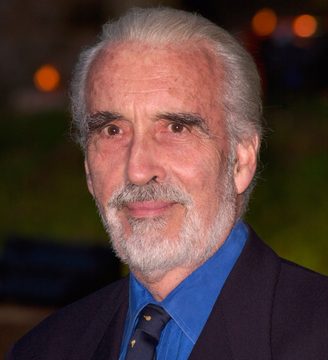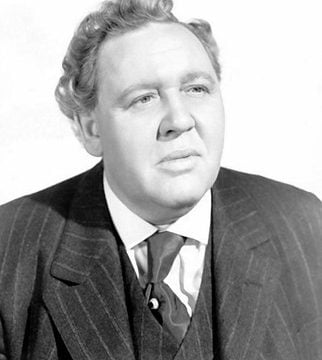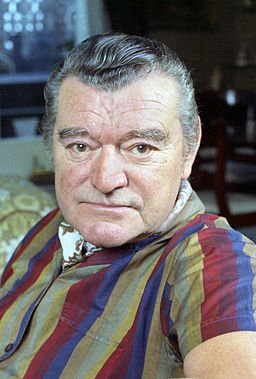
Early Life and Career
The actor Jack Hawkins was born John Edward Hawkins on 14 September 1910 in the Wood Green suburb of Haringey, London. He was the youngest of the four children of Thomas Hawkins, a builder, and his wife, Phoebe. Hawkins was educated at Wood Green’s Trinity County Grammar School. He made his London stage debut, aged 13, in a children’s Christmas play at the Holborn Theatre. At the tender age of 18, Hawkins made it to Broadway, making his debut in R.C. Sheriff’s “Journey’s End”.
Hawkins made his film debut in 1930, appearing in the mystery thriller Birds of Prey. However, the stage remained his main focus throughout the 1930s. Nonetheless, Hawkins managed to notch up another sixteen film appearances in the years leading up to WW2. His first starring role came in Beauty and the Barge (1937). He then went on to star in The Frog (1937), Who Goes Next? (1938), A Royal Divorce (1938), Murder Will Out (1939), and The Flying Squad (1940).
The 1940s
In 1941, Hawkins was commissioned into the Royal Welch Fusiliers as a second lieutenant. Shortly afterwards he appeared in the war propaganda film The Next of Kin (1942) made by Ealing Studios. He went on to spend most of the War serving with the Entertainment National Service Association (ENSA) in India and Southeast Asia. However, in 1944, he transferred to the Expeditionary Force Institute as a lieutenant.
In July 1946, Hawkins resigned from his Army commission to make an immediate return to the stage. His first role was in the George Bernard Shaw play The Apple Cart. The following year he appeared in Othello to mixed reviews. His first postwar film part was a starring role in Bonnie Prince Charlie (1948). However, the film turned out to be a total box office flop. However, his next three big screen appearances in the British thrillers; The Fallen Idol (1948), The Small Back Room (1949), and State Secret (1950), were all critically acclaimed.
Stardom
In 1951, Hawkins was a leading man in the Broadway production of Romeo and Juliet, starring Olivia de Havilland. It was the last time that Hawkins appeared on the stage. However, the 1950s turned out to be the decade when Hawkins’ film career flourished. The box office success of films like Angels One Five (1951), The Planter’s Wife (1952), and Mandy (1952), saw Hawkins’ popularity significantly rise. He also went on to be acclaimed for his starring role in The Intruder (1953).
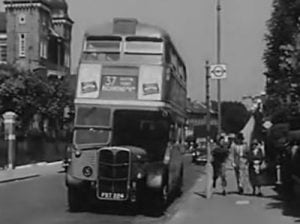
A scene from the Intruder (1953) starring Jack Hawkins. Photo credit: Creative Commons (Public Domain Mark 1.0)
Hawkins next starred as a naval officer in the WW2 drama The Cruel Sea (1953). It was Britain’s most profitable film of the year. The film’s success saw Hawkins voted the country’s most popular actor. He led in a further eleven films before starring alongside Alec Guinness and William Holden in the Oscar-winning The Bridge on the River Kwai (1957). Arguably, it is Hawkins’ role as Major Warden in the 1957 massive box-office hit for which he is best remembered. He went on to have major supporting roles in two other Oscar Best Picture winners; Ben-Hur (1959) and Lawrence of Arabia (1962). He also starred in the epic Anglo-African war film Zulu (1964), which broke all British box office records of the time.
Career in Decline
The 1960s signalled the start of the decline of Hawkins’ career. After “Zulu”, his film appearances were mostly limited to supporting roles. After 1965, Hawkins’ voice was dubbed on screen following his operation for throat cancer. Nonetheless, he went on to appear in a further 20 movies after his brush with death. The voices of British actors Robert Rietti and Charles Gray were exclusively used in dubbing with Hawkins’ approval. However, he was also accommodated by screenwriters who generally gave his characters minimum dialogue.
Hawkins was hugely thankful for the opportunity of an unlikely extension to his career. He even ventured into the genre of comedy in the likes of Monte Carlo or Bust (1969), Twinky (1970), and The Adventures of Gerard (1970). He went on to land his last lead role in the action-adventure film The Last Lion (1972), set in South Africa. The screenplay was written by the famed South African author Wilbur Smith.
In all, Hawkins appeared in 77 films during a 43-year movie career. His last big screen role was that of Dr Nicholas in the 1973 British horror film Tales That Witness Madness. However, his very last screen appearance came posthumously in the American television mini-series QB VII (1974).
Personal Life
In 1932, Hawkins married the actress Jessica Tandy. They had one daughter, Susan (b. 1934) before divorcing in 1940. He married his second wife, former actress Doreen Lawrence in 1947. The couple remained married until Hawkins’ death in 1973. Together, they had three children, Caroline (b. 1955) Andrew (b.1952), and Nicholas.
Hawkins’ screen image was largely that of a quintessential, conservative, stiff upper-lipped military type. However, amongst friends, Hawkins was known as quite a sensitive and emotional man.
Hawkins smoked around 60 cigarettes a day for much of his adult life. In 1959, he underwent cobalt treatment for an undisclosed condition of the larynx. In December 1965, he was diagnosed with throat cancer which saw his larynx removed soon after. After losing his voice, he was forced to use a mechanical voice box. In 1968, Hawkins underwent an operation to restore his voice but the surgery was less than successful. Though afterwards, he could manage to speak to some degree in a croaky voice.
In 1958, Hawkins was made a Commander of the Order of the British Empire (CBE) in the Queen’s Birthday Honours List for services to the acting profession.
Death
In May 1973, Hawkins had an experimental operation on his throat to insert an artificial voice box. Shortly afterwards, he was admitted to St Stephen’s Hospital, London, following post-operative complications. He died of a secondary haemorrhage on 18 July 1973, aged 62.
He was cremated and his ashes were interred at Golders Green Crematorium in north London. His autobiography, “Anything For a Quiet Life”, was published shortly after his death.
Header image credit: Wikimedia Commons
